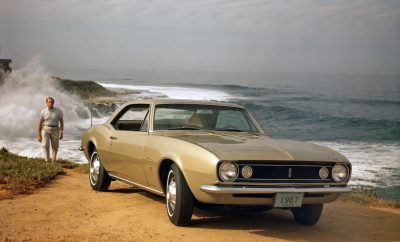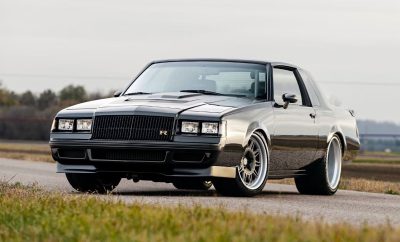Best Muscle Cars
What Is and Is Not A Muscle Car

Dave Ashton
We have written in the past about the definitions of the muscle car, its origins and what can be classed as a muscle car in the past and today. Simply put, a muscle car is a mid to full-sized American derived vehicle with a large, powerful V8 engine, rearwheel drive, two doors and generally affordable to the masses. Examples being the Plymouth Road Runner and the current Dodge Challenger Hellcat and Demon.
To further complicate things you have pony cars, which started with the 1964 Ford Mustang and you can throw into the mix Camaros. The terms of muscle car and pony car can easily intermix, especially these days as you could argue the only true modern muscle car is the Dodge Challenger and Charger, so vehicle choices are thin on the ground, thus the grouping. I personally don’t have a problem with using the naming conventions of muscle car or a pony car with describing anything from a Barracuda to even a Mustang, especially today. Sacrilege to some, but until there is a wider choice of muscle cars on the market, lumping in Mustangs and Camaros to the muscle car market can only further promote the description and give some idea of the origins to the uninitiated, but this is where the definition should end.
Not set in stone
The definition of a muscle car is not really set in stone, steel or carbon fibre and never was. There is still debate over whether certain models in the range are indeed muscle cars or pony cars, i.e. the difference between a base model Challenger and a Challenger T/A or a Pontiac Firebird or a Firebird Trans-Am. Arguments can go on for days if these are muscle cars, pony cars or neither. Muscle cars and pony cars do derive from the same American DNA and a healthy V8 engine to an extent, so I don’t think you need to get hot around the collar between interchanging these terms for both classes of vehicle. What should be the debatable point is when a completely unrelated vehicle is referred to as a muscle car. If it’s a hot hatch, it is not a muscle car, if it European and has had a V8 engine crowbarred into it, its not a muscle car. In other words, it’s when the term is thrown around readily to denote a car you want to describe as having size and power.
If it’s not American or Australian it’s not a muscle car
Yeah, Australia are the next nearest breed to true muscle cars in the shape of the Ford Falcon, Holden Monaro, Holden Torana, Holden Commodore, HSV and FPV. These come from the factory with muscle car DNA and principles. However, to be really definitive the true thoroughbreds are American (there goes the pony reference…). What are not are basically anything else and that is where the line should be drawn. Arguing over the merits of a pony car or base model muscle car brand to join the true muscle car ranks is really futile. You can’t join the muscle car club if you have a Mercedes-Benz with a V8 engine. To be very generic, anything built outside these two landmasses doesn’t even start to count. The ubiquitous V8 engine as used in all muscle cars did start in Europe in 1902, but it was really America that took the V8 design to heart with Cadillac in 1914, Oldsmobile in 1916, the Ford Flathead V8 and the Oldsmobile Rocket in 1949. Classic American V8 engines also have a distinctive sound with its uneven burble. The American culture surrounding the small and big block V-8 engine far surpasses anything elsewhere and this is tied very closely to muscle cars. You can argue the merits between a flat plane and cross plane V8 and many modern V8 engines have design inspirations from everywhere, but the V8 engine is most closely associated with American vehicles and muscle cars. Get over it…..
This car has muscle….
Many car reviews will use the term ‘muscle car’ as a description. It’s a cool sounding name, so why not. To the uninitiated, it conjures up the images of a vehicle with power and performance, a cut above the rest in power, which is why the term is borrowed so frequently. It happens in written articles and TV shows across the board. So this is where the arguments should be when it comes to the muscle car definition. Just as you wouldn’t refer to a Plymouth Superbird or Dodge Demon as a sports car, you shouldn’t refer to a Lamborghini, BMW V8 or the like as a muscle car. The term can be borrowed, but it’s not the definition of a muscle car. It’s probably why even to this day, the term is still argued over and which makes and models can join the club. It’s a term that is thrown around so readily, so no wonder the definition is so argued.
There is no one definitive source or point of origin for the term, but at the least, the term is still fenced off to refer to American V8 vehicles of a particular make and model. The definition ‘muscle car’ probably came from someone, somewhere, referring to the original vehicles as having ‘muscle’ and the term stuck. Everyone else just wishes they could join the club, but we got there first, so blah. The Dodge Challenger, Barracuda, Superbird Roadrunner got their cool names first, everyone else wishes they had thought of it first. Supercars and hyper cars may sound exclusive, but a muscle car denotes something raw and untamed, something that still appeals to our basic instincts. Probably why the Ford Mustang got away with having a ‘live axle’ for so long and V8 engines are so amazingly loud. We like a bit of seat of your pants driving.
When it comes down to it, the term muscle car and even pony car was never set in stone by the automotive gods of old, never to be questioned. It’s a term that slowly, over time came to denote a certain class of American V8 vehicle, that still stands as a mark of raw power most notably to the masses. They are raw, sometimes unrefined, but the main point is they should be accessible to everybody. Supercars and hyper cars can arguably be more powerful, but affordable to only the select few. Muscle cars on the other hand, are the great levellers where the average guy can still enjoy huge power and performance and is even encouraged to work on their own vehicle to get even more muscle. The muscle car also denotes a time of the free spirit where you wanted to make it more powerful, you simply made it bigger and a free rein to do so. A 454ci/7.4 litre engine from a 1970 Chevelle SS is ridiculously non eco-friendly by today’s standards, but if you wanted to have more horses back in the day, you simply made it bigger. Even with today’s electric vehicles, you want more power, you make it bigger. The muscle car stands for this raw principle.
Therefore, muscle cars and pony cars shouldn’t be argued over in the same camp. It should be sort of a loose fit today, but not too lose to eradicate the definition completely. I.e. if you have a Dodge Challenger your in, a Honda Civic with a V8 engine, you’re out. An AMC Gremlin is pushing it a bit, though………………
More Muscle Cars For Sale – http://fastmusclecar.com/muscle-car-for-sale/









1 Comment